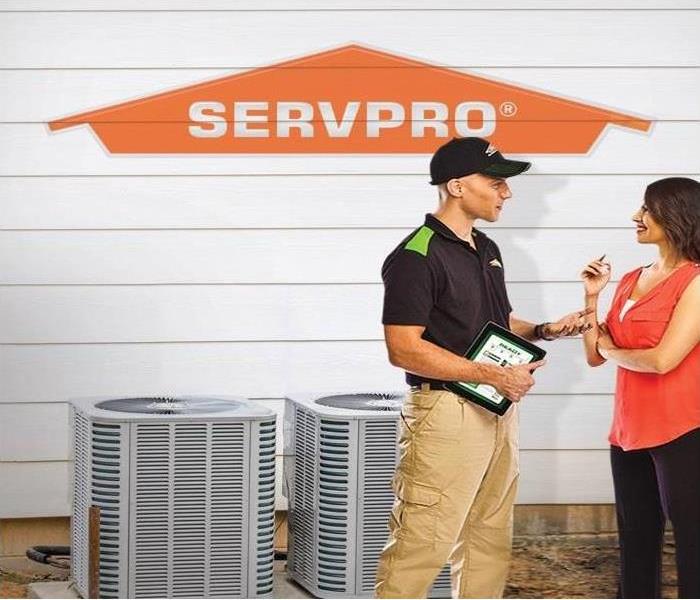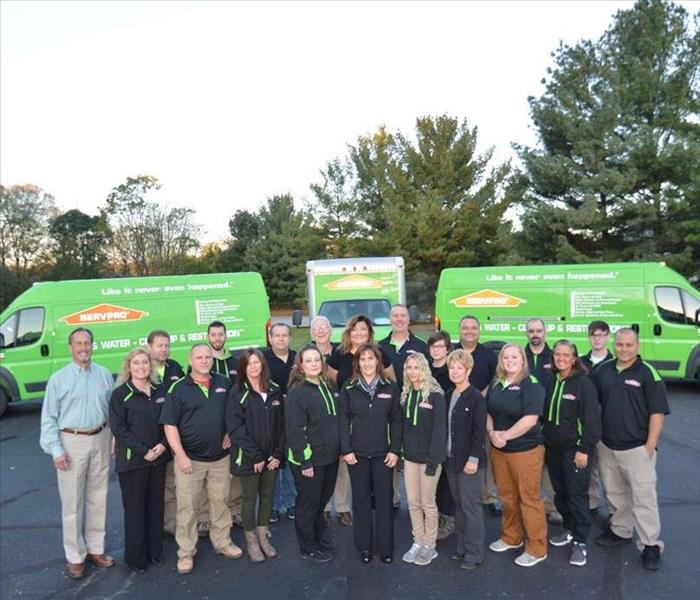Archived General Blog Posts
Summer Home Maintenance Tips in Northern Summit County
7/26/2019 (Permalink)
 When the sun finally comes out, we all want to take trips, stay outside, and enjoy the nice weather.
When the sun finally comes out, we all want to take trips, stay outside, and enjoy the nice weather.
When the sun finally comes out, we all want to take trips, stay outside, and enjoy the nice weather. However, homeowners should cross a few items off their list to ensure winter left no surprises.
Here are some summer home maintenance tips to take care of before soaking up the sunshine:
Clean: A whole slew of pieces will need cleaned after the winter months. Eavestroughs, downspouts, gutters, furnace filters, dryer vents, lint traps, air conditioners, and siding could all use a little attention. Clear out any debris or build-up to prevent any damage, backing up, or safety issues. Keeping everything tidy will help reduce risk of disasters or costly fixes later.
Inspect: Chimneys, roofs, decks, patios, swing sets and other equipment, toilets and pipes, doors and windows, and electrical outlets and cords need a good once-over to check for any broken pieces or protruding parts. Finding damage and taking care of them right away will keep costs to a minimum and lessen the chance of any emergencies occurring. Stay on top of all the details, and you can have a relatively smooth summer where your home is concerned.
Examine: The exterior of your home, landscaping, and exterior caulking should be looked over thoroughly to find any evidence of any deterioration or marring that may need touched up and repaired. You may see signs of rodents or wildlife that need addressed, also. Proper attention can keep the problem from persisting or worsening.
Take this list and add anything that may have been overlooked. SERVPRO of Northern Summit County are available 24/7 including holidays and weekends to assist you and get your home back to “Like it never even happened.” You will be able to rest easy and enjoy the summer sun accordingly.
The History of Meth & Future of Decontamination
6/21/2019 (Permalink)
Methamphetamine is not a new drug, although it has become more powerful in recent years as techniques for its manufacture have evolved. The History of Meth According to DrugFreeWorld.org, Amphetamine was first made in 1887 in Germany and methamphetamine, more potent and easy to make, was developed in Japan in 1919. The crystalline powder was soluble in water, making it a perfect candidate for injection. In the 1930s, doctors began using amphetamines in the United States to treat asthma and narcolepsy. Methamphetamine went into wide use during World War II, when both sides used it to keep troops awake. High doses were given to Japanese Kamikaze pilots before their suicide missions. And after the war, methamphetamine abuse by injection reached epidemic proportions when supplies stored for military use became available to the Japanese public causing post-war Japan to experience the first meth epidemic. In the 1950s, methamphetamine was prescribed as a diet aid and to fight depression. Easily available, "pep pills" or "bennies" were sold as a nonmedical stimulant to college students, truck drivers and athletes and abuse of the drug spread. This pattern changed markedly in the 1960s with the introduction of home manufacturing of the drug, worsening the abuse. Then, in 1970, the U.S. government added methamphetamine to the Controlled Substances Act regulating the drug. After that, American motorcycle gangs controlled most of the production and distribution of the drug. During the 1980s, Mexican drug manufacturers began producing forms of the drug that could be smoked and towards the end of the decade, new ways to cook methamphetamine began to appear. In the 1990s, Mexican drug trafficking organizations set up large laboratories in California. While these massive labs are able to generate 50 pounds of the substance in a single weekend, smaller private labs were springing up in kitchens and apartments, earning the drug one of its names, “stove top.” Rural locations became ideal for cooking meth because of geographic isolation. Meth Today Today, most of our meth in North America comes out of Mexico or is produced in soda bottles known as the "Shake n' Bake" method. Most of the contaminated properties become contaminated through usage rather than from production. It is estimated that more than 2.1 million Americans are currently using methamphetamine. The problem is that users can contaminate anywhere from one to 50 properties per year, leading to an estimated 12 million properties contaminated in the U.S. and another 800,000 properties contaminated in Canada. Users move from house, to apartment, to hotel, to car, to new relationship, to the next motel, etc. Everywhere they go, they continue to use or smoke meth. Nothing inside this drug is natural. Most of the ingredients contain carcinogens and poisons leaving a dirty trail behind that enters into the cold air returns circulating throughout the property. Studies indicate that just smoking meth two to four times can contaminate a property above habitable standards. Meth residue is sticky and clings to surfaces and inside the ducting system until it is physically decontaminated and removed. The Decontamination Process Here's a quick outline of the process:
- Remove Porous Materials
- Dry Clean
- Wet Clean
- Rinse
- Test
Decontaminating a property starts with removing all porous materials including furniture, carpet, carpet pad, soft ducts, etc. Next, the furnace and duct work is cleaned using duct cleaning equipment to remove dust, dirt, and debris. Dust and dirt also needs to be vacuumed from the floor and surfaces throughout the property. Once everything has been dry cleaned, we bring up the heat and humidity in the home before applying a meth remover product. It is important to use a product that can remove the bio-film from the surface, making physical removal easier. The product can be applied with a ULV fogger, foamer (most recommended) or a paint sprayer. Once product is on the surfaces, scrub it into the surfaces and allow to remain moist up to four hours. This process is repeated two to three times depending on the amount of methamphetamine in the property. Lastly, we rinse. The meth remover product rinses easily with water. Once the surfaces are dry, the home is ready for testing. There are less than 1,000 remediation companies that actually advertise that they remediate methamphetamine and there are nearly 12 million contaminated properties in North America. This means our industry could easily add another 20,000 remediation companies that could complete 50 to 100 jobs a year. The best part about meth remediation is that there are no such things as meth emergencies. Meth remediation calls aren’t made in the middle of the night and the jobs can be scheduled. Contrast this with water damage work. The profit margins are good (35-55% depending on your efficiency). This problem is not going away.
Deciding When to Demo, and When to Restore
4/25/2019 (Permalink)
To demolish, or not to demolish, that is the question. In a nod to William Shakespeare’s Hamlet and perhaps one of the most popular lines in English literature, we are constantly faced with this issue in our industry. The decision to demolish, either completely or selectively, versus repair/renovate is sometimes like running the gauntlet.
Whether the loss was caused by fire, flood, wind or other peril, the single most important factor to consider is safety.
If your client’s home or business has sustained structural damage, it is imperative a registered design engineer evaluate the structure to determine if it has been compromised and if can it be repaired. The local building authority is likely to have some input in this process. The stamped letter/documents from the engineer will need to be submitted to that authority.
A house or building found to be in very poor condition structurally speaking is usually better off demolished. It may be a cheaper and safer option. If the building can be repaired, now the question becomes should the building be repaired. Factors such as historical significance, cost, condition of the house, building code upgrades, etc. should all be reviewed. Insurance carriers will also have some influence in the decision. Depending on the language in the policy, carriers may have the right to consider replacement versus drying, cleaning or repair.
Demolition Considerations
- Is the property a historic property or in a historic district (aka heritage home)? Is it architecturally significant? There may be historic preservation ordinances and laws to protect historic resources and character. Many cities, towns and communities establish historic preservation commissions and a process for considering alterations or demolition.
- Investigate the permitting process early in the planning stage. If your client decides to demolish a building, even one that has suffered fire or storm damage, it does not automatically follow that you will get planning/zoning permission to build any replacement structure or to change the use of the site.
- Teardown restrictions can require structures to strictly adhere to the predominant architectural size and standards of the neighborhood.
- Demolition permits usually require site specific testing for contaminants such as lead and asbestos, prior to demolition. Building materials such as ceilings, ductwork, flooring, roofing and siding may contain these materials. Disposal of demolition debris that has asbestos-containing material (ACM) can be costly. Consideration should be given to the presence of coolant gases (freon/refrigerant), mercury (fluorescent lamps) and potentially radioactive materials (exit signs). Discovery of an old, underground oil storage tank can also be very costly.
- Utilities must be disconnected, including electricity, gas, cable/phone, sewer and water. Some cities/jurisdictions, such as Boston, may require you to disconnect utilities all the way to the property curb line or Right of Way (ROW).
- The cost to demolish and rebuild a home or business is highly variable.
- Newly constructed homes tend to be more energy efficient than renovated homes.
- Environmentally critical areas, such as wetlands or steep slope, have different restrictions.
- Local fire departments may require permits to be pulled and inspections/oversight by the fire marshall.
- If there is a mortgage on the property, your client must involve their bank in the process. The only legal way to tear down a house is to own it outright or to pay off any existing mortgage(s). If the loan balance is less than the value of the land, there could be an issue. Construction loans and/or insurance proceeds could be used to pay off the debt.
Repair/Renovation Considerations
- Renovation/repair is an alternative to demolition, but it may not be the most affordable option. Costs tend to accumulate the further you get into a renovation project and unforeseen problems discovered. Opening up walls, for example, can reveal pest/termite infestations, leaking pipes, mold, deteriorated framing, damaged wiring, cracked foundations, etc.
- Extensive water damage can undermine foundations and footings. This type of damage can be difficult to identify. A thorough inspection of the property should be completed prior to making the decision to repair/renovate.
- Older buildings/homes often have interior layouts that are difficult to rearrange for modern uses. An open floor plan with lots of natural light may not be so easily or cost effectively accomplished.
- Many homes and businesses were built when building codes were less strict than they are today. Rebuilding or restoring a structure may require meeting more demanding building codes. Even undamaged parts of the structure may be required to be brought up to current building code (plumbing, electrical, mechanical, life safety, ADA, energy, etc.).
- Depending on the extent of the damage, planning and zoning review may also apply to “repaired” buildings. For example, we recently experienced a building that was designated an R-2 usage classification when it was constructed in the 90’s. A partial fire loss caused the local building department and fire department to reevaluate the usage classification as it had changed since the original construction. Ultimately, the classification had to be changed which, in turn, triggered the application of more stringent building and life safety codes. The moral of the story is that, over time, the original approved usage classification of a facility can morph and change into something different despite good intentions from ownership.
- Substantial rehabilitation of historic structures or in a historic district may qualify for significant tax credits.
- In some communities, local government rules encourage substantial renovations over demolition by making it easier, faster and cheaper to obtain the necessary permits. You may be able to retain the foundation or add on to it. You might also be able to retain a portion of the existing structure or incorporate it in to your design thereby allowing you to sidestep local restrictions.
- Deconstruction – the careful removal of building materials to reuse them elsewhere – can provide financial and environmental benefits. Donations are tax deductible. Recycling building materials can be gratifying for environmentally conscious homeowners. The downside is that deconstruction can take two to three times longer than typical demolition.
- Renovations may require that a lead-safe licensed renovation contractor be engaged.
- Existing commercial buildings undergoing substantial renovations are eligible to become LEED certified under LEED for Commercial Interiors and/or LEED for Existing Buildings upon completion of the renovation and three months of occupancy/operation.
- Repairs/renovations can sometimes be completed in stages. Living expenses can add indirect costs to repair/renovation budgets. The homeowner may be able to live in the home while work is being completed.
No matter which route you choose, demand surges for labor, equipment and materials are not uncommon after natural disasters – hurricanes, tornadoes, earthquake, flooding, wildfires, etc. Do your homework and open a dialogue with the local building department, insurance carrier, contractors, vendors and suppliers. The key is proper planning before you pick up a hammer. Don’t go into a project blindly and hope to stay within budget.
HVAC Problems ? Here are 5 Problems and Solutions
6/21/2018 (Permalink)
 SERVPRO will make recommendations about the best way to address any indoor air quality concerns. This can save you money and provide peace of mind.
SERVPRO will make recommendations about the best way to address any indoor air quality concerns. This can save you money and provide peace of mind.
When your HVAC system isn't cooling your home efficiently and comfortably, there's likely a big problem requiring maintenance, troubleshooting or repair. Here are the 5 most common HVAC problems and solutions.
Noisy Air Vents
Noisy air vents mean trouble. Rattling and clamoring noises are often caused by loose ductwork connections. Wrapping the rattling ducts with metal tape will do the trick.
Loud pops and bangs are usually ductwork expansion and contraction due to temperature variances. Make sure your ducts are well insulated.
Frozen Evaporator
Ice buildup on the evaporator coil brings home cooling to a halt -- even though your A/C may still run. Dirt buildup on the evaporator is a common problem for ice accumulation. Clean the evaporator with a spray can of self-rinse coil cleaner.
High Indoor Humidity
High indoor humidity is one of the most common HVAC and indoor air quality problems during the cooling months. The only practical way to control high humidity in your home is with a dehumidifier. This could be a portable unit, or install a whole-home dehumidifier for optimal results, comfort and efficiency.
Water Leaks
Your central air system produces an unbelievable amount of condensate during the cooling months. So, it's quite common for the drainage system to become clogged and/or malfunction and spill water in your home. You can try to alleviate the clog with a shop-vac, but it's better to call your HVAC technician right away.
Dirty Air Filter
Air filters are among the simplest HVAC devices. Yet, a dirty filter can cause a long list of expensive problems -- including all of the preceding four most common HVAC problems. Moreover, running your HVAC system with a dirty filter drains your energy budget. Change your filter as suggested by the manufacturer.
Worried about your HVAC Compressor and lightning damage ? Check out our blog post HVAC Compressor Damage: Lightning or Wear & Tear
Also check out what SERVPRO of Northern Summit County's Air Duct and HVAC cleaning services can do for you.
Questions or in need of service ? Call us today - 330-650-4486
SERVPRO of Northern Summit County
4/25/2018 (Permalink)
 Hire SERVPRO of Northern Summit County today - 330-650-4486
Hire SERVPRO of Northern Summit County today - 330-650-4486
SERVPRO of Northern Summit County takes great pride in being a part of the Northern Summit County community. We understand that communities like ours hold America together. We want to do our part to ensure the Northern Summit County community thrives by helping those less fortunate, keeping the area safe and making our community the best it can be.
Our staff is highly trained in property damage restoration. From initial and ongoing training at SERVPRO’s Corporate Training Facility to regular IICRC industry certifications, rest assured our staff is equipped with the knowledge to restore your property. Our training program includes the following:
- IICRC Training
- Employee Certification Training
- Initial Franchise Training
- e-Learnings
- Continuing Education Classes
The Institute of Inspection Cleaning and Restoration Certification (IICRC) certifies and sets the standards for the cleaning and restoration industries. Our Professionals study IICRC standards and best practices in water restoration, fire restoration, mold remediation, carpet and upholstery cleaning, and other cleaning and restoration courses.
The IICRC sets practical standards for restoration and cleaning. The past few decades has seen a rapid advancement in the technology and techniques used in the restoration industry. These advancements allow SERVPRO of Northern Summit County Professionals to restore a property back to preloss condition quickly, reliably, and more effectively.
In need of our services ? Hire SERVPRO of Northern Summit County today by calling our 24/7 Emergency Service line - 330-650-4486, or Request Help Online
We're On Social Media !
6/27/2017 (Permalink)
Social media allows us to interact with our customers, local businesses, and industry partners in new and exciting ways. SERVPRO of Northern Summit County is active on Facebook and LinkedIn, with more outlets to come! We would love for you to follow us so we can hear your thoughts and feedback through social media, and we welcome comments on industry topics and content you would like to hear more about !
On our social media pages, you can find relevant safety, cleaning, and remodeling tips, local and industry news, event information, before and after pictures of completed jobs, pictures of our crew, volunteer and fundraising campaigns, and more! Please click the links below and follow our pages to receive the latest updates from us!
Facebook: https://www.facebook.com/SERVPRON.SummitCounty
LinkedIn: https://www.linkedin.com/company/restoration-resources-inc-dba-SERVPRO-n-summit-county-portage-county-and-canton
IICRC Certified Firm
11/15/2016 (Permalink)
 We are an IICRC Certified Firm
We are an IICRC Certified Firm
SERVPRO of Northern Summit County is an IICRC firm. The Institute of Inspection, Cleaning and Restoration Certification (IICRC) creates the standards for the restoration industry and provides training and certification to restoration companies. IICRC Certified Firms have the right to display the IICRC Certified Logo.
IICRC Certified Firms must
- Present accurate information to consumers and conduct business with honesty and integrity.
- Require a technician on all jobs who has been formally trained and passed all required tests.
- Require a continuing education program to keep technicians up-to-date on the latest changes in the industry.
- Maintain liability insurance to protect all parties in the event of an accident.
- Maintain a written complaint policy and agree to Better Business Bureau or similar arbitration to resolve disputes, and accept the conclusions and recommendations of arbitration.
The IICRC Develops The Standards For The Restoration Industry
The IICRC has been the driving force in establishing the main industry standards and reference guides for professional carpet cleaning, water damage restoration and mold remediation. These IICRC standards take years to develop and require the coordination of experts in the field: manufacturers, industry organizations, insurance professionals, training schools, contractors, and public health professionals.
Every five years, the standards are reviewed and updated. The water damage restoration field changes rapidly with advancements in technology and science, and therefore the standards must evolve to keep pace.
Follow us on social media
6/16/2016 (Permalink)
 Follow us on social media!
Follow us on social media!
SERVPRO of Northern Summit County is active on social media, and we would love for you to follow us! On our social media pages, you can find relevant safety, cleaning, and remodeling tips, local and industry news, event information, before and after pictures of completed jobs, pictures of our crew, volunteer and fundraising campaigns, and more! We are currently on Facebook and LinkedIn, with more platforms to come. Social media allows us to interact with our customers, local businesses, and industry partners in new and exciting ways. We love to hear your thoughts and feedback through social media, and we welcome comments on industry topics and content you would like to hear more about. Please click the links below and follow our pages to receive the latest updates from us!
Facebook: https://www.facebook.com/SERVPRON.SummitCounty
LinkedIn: https://www.linkedin.com/company/restoration-resources-inc-dba-SERVPRO-n-summit-county-portage-county-and-canton
Tips for Winterizing Your Home!
11/3/2014 (Permalink)
 Winterize Now So Pipes Don't Freeze This Winter!
Winterize Now So Pipes Don't Freeze This Winter!
Cold Weather can have a huge impact on businesses and homes that aren’t protected. Heavy precipitation, freezing temperatures and damaging winds can all have a negative impact on your property. To help avoid costly and time-consuming damages due to the weather, consider the following tips while winterizing this year:
Keep cabinet doors open during cold spells. This allows warm air to circulate around pipes.Keep a slow trickle of water flowing through faucets, especially if the pipes for faucets run through unheated or un-insulated areas of your home and/or business.Consider shutting off outdoor faucets. Find the shut off valve in the basement
or crawl space and turn it to “off”.If you follow the previous step, then open the outdoor faucet to help ensure it drains completely and the inner valve is shut off.
 When the sun finally comes out, we all want to take trips, stay outside, and enjoy the nice weather.
When the sun finally comes out, we all want to take trips, stay outside, and enjoy the nice weather.






 24/7 Emergency Service
24/7 Emergency Service





